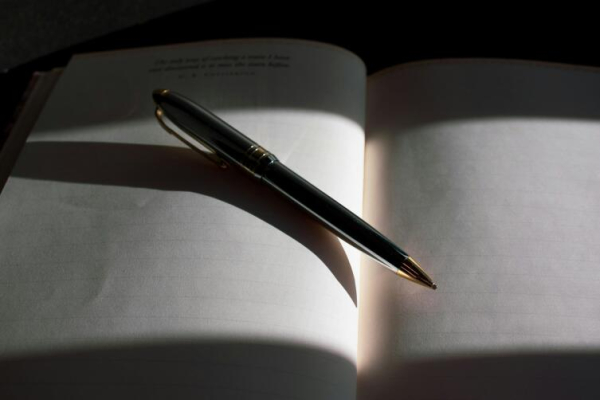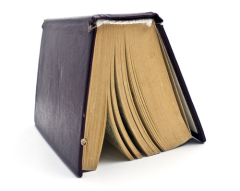
Pens come in many different forms. But the topic of this article is the history of the pen as a writing instrument. How old is the pen, how has it evolved, and where has it come from today?
Our distant ancestors would draw various pictures on the walls of their caves. Sometimes they would scratch the wall with a sharp stone and then fill the scratches with colored clay, and sometimes they would use colored stones to create these designs. The history of pens began much later, though still around 3,000 years ago.
Writing brushes appeared in ancient China approximately 3,000 years ago. Archaeologists have found examples of these brushes with wooden handles and made of dog or goat hair. Similar brushes appeared in ancient Egypt around the same time.
The first pen was also invented in Ancient Egypt. Archaeologists discovered examples of such pens in the tomb of Tutankhamun (died 1327 BC). They were made of copper. This casing contained a pointed lead tube, inside which was placed a reed soaked in paint—red or black. The paint reached the pointed lead nib through capillaries, allowing the pen to write on papyrus.
The Romans wrote on wax tablets with a stylus. This pointed bronze stick can't really be considered a pen, but it did serve the functions of a pencil or pen. However, on papyrus and parchment, they wrote with bird quills. For easier writing, the quills were trimmed with special penknives. These penknives remained in use for their intended purpose (sharpening quills) until the late 19th century, when metal nibs finally overtook bird quills.
After the fall of Rome, the “Dark Ages” began. During this time, writing was mostly done on parchment, specifically tanned hides—cow, goat, or sheep. Ink for writing on parchment was made from alder nuts with the addition of oils and bone glue. The writing ate into the skin and was water-resistant. Parchment was expensive, so when previous inscriptions became obsolete, they were simply scraped off with a special scraper, allowing for a new inscription to be written on the same sheet.
Paper appeared in Europe in the 11th century, and travelers to China were able to adopt its production technology. And by the 13th century, the first paper mills were built there, producing paper from wood.
As the writing material changed, so did the ink. But for a very long time, people wrote on parchment and paper with feathers. Even the English word ” pen ” comes from the Latin penna, or bird feather. And historically, feather substitutes are still called “quills.”
Until the mid-20th century, metal-nibbed pens reigned supreme. These were simple nibs: you dipped them in an inkwell, wrote a sentence or two, and then dipped them in ink again.
There were automatic pens, the so-called “self-writing” pens. They were filled with ink, and one refill was enough… I don't remember, but it was definitely enough for a day at school. The teacher always had a bottle of ink, and if you ran out, you could ask permission to refill the pen and keep writing. The nibs were made of stainless steel. But there were also foreign pens, expensive and rare among ordinary schoolchildren, because they had gold nibs.
Then, in the late 1960s and early 1970s, ballpoint pens appeared in schools. At first, teachers were extremely negative about them, saying they would deteriorate students' handwriting (and in a way, they were right).
Ballpoint pens and their complex history spanning several decades have been written about at length. So, we won't repeat ourselves.
Nowadays, the keyboard is most often used for writing. Incidentally, you can even turn on spelling—and the computer will tell you exactly where you made a spelling mistake. Simple, useful, and easy. My teachers would be horrified: not only do you no longer have to think about the beauty of your handwriting, but the standards for literacy have been greatly relaxed.
However, there is still a need to simply write some notes on paper.
Fountain pens have become a rarity these days. They're probably used to sign intergovernmental treaties and the like. Ballpoint pens, fineliners (Rapidographs, drafting pens, or art pens), gel pens, and rollerball pens are more commonly used in everyday life.
Rapidographs are professional pens for draftsmen and comic book artists. They were invented and manufactured in 1928 by the German company rOtring (as they spelled their company name). The new pen was called the Inkograph or Tiku. It was intended that draftsmen would now use it for ink drawings, rather than a ruling pen. Based on this tool, the first Rapidograph was created in 1953. Subsequently, all pens of this type from different manufacturers came to be called Rapidographs (just as all copying machines are now called “Xerox”).
Gel pens. A patent for their invention was received by the Japanese company Sakura Color Products Corporation in 1982. These pens are very similar to ballpoint pens, but gel pens lack a ballpoint pen and use a colored water-based gel for writing. Writing with these pens takes a little longer to dry, but they write more easily, more evenly, and produce a finer mark. Many people prefer this.
Rollerball pens are a cross between gel and ballpoint pens. They have a ballpoint pen, but the refill is filled with gel. Gel adheres better to paper, so these pens write even on dirty paper. The lines drawn with these pens are sharper than those of a ballpoint pen.
In fact, among the pens sold in office supply stores, it's extremely difficult to distinguish gel pens from rollerball and ballpoint pens. The buyer simply wants a pen that writes reliably and lasts longer.





